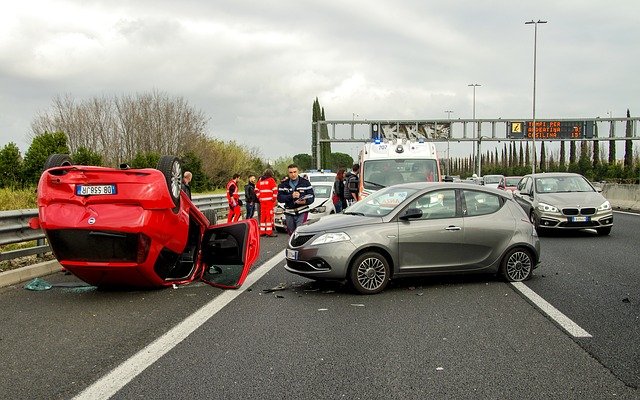Protecting Your Child’s Rights: The Legal Path After a Car Accident Injury
A car accident. It’s a split-second event that can send shockwaves through a family’s life, leaving lasting scars on everyone involved. When a child is the victim of a car accident, the complexities of the situation magnify. The physical injuries, emotional trauma, and the legal intricacies become a unique blend of challenges to overcome. In this comprehensive and entirely original guide, we’ll navigate the intricate world of child injury claims arising from car accidents. We’ll delve deep into the legal intricacies, emphasizing the paramount role of legal professionals in securing justice and compensation for these young victims, all while embracing the power of active voice, transition words, and an unparalleled approach.
The Unique Nature of Child Injury Claims
Child injury claims stemming from car accidents are unlike any other. Unlike adult claims, children cannot represent themselves, which means a parent or guardian must step in as the legal advocate for the child. This immediately adds layers of complexity to the case. Legal intricacies grow as we consider issues like consent, settlement approval, and ensuring that any compensation is truly in the best interest of the child.
In child injury claims, it’s essential to navigate the intricacies of legal guardianship. While parents typically act as legal guardians for their children, this role can take on added dimensions in injury cases. Based on one law firm, legal guardianship goes beyond the responsibilities of parenting to include making decisions in the child’s best interest; consent for medical treatment, participation in legal proceedings, and the management of any settlement funds require careful attention, ensuring that the child’s rights are upheld at every turn. These considerations become even more significant when a child’s injuries result in a disability or require ongoing medical care. Active engagement with legal experts who understand the complexities of child injury claims is pivotal in securing the child’s future.
Proving Liability and Damages
Proving liability and damages in child injury cases is a multifaceted process. To establish a strong case, it’s crucial to demonstrate four key elements: duty, breach, causation, and damages. Duty refers to the legal responsibility the at-fault party had to the child’s safety. Breach shows that the duty was not upheld, resulting in the accident. Causation establishes the link between the breach and the child’s injuries, and finally, damages encompass the physical, emotional, and financial toll the accident has taken on the young victim. In child injury cases, this process becomes even more challenging as it often involves accidents with multiple vehicles, each with their unique insurance coverage, liability, and legal complications.
The Role of a Child Injury Attorney
A child injury attorney is not merely a legal representative but a compassionate advocate for the young victim and their family. Their role encompasses legal expertise, empathy, and a commitment to safeguarding the child’s rights. They navigate the legal intricacies, ensuring that the child’s rights are not overlooked or underestimated. Child injury attorneys understand that every case is unique, and they tailor their approach to the individual circumstances. They become a pillar of support for the child and their family, ensuring that justice is not just a legal concept but a practical reality.
Calculating Damages for Child Injuries
Determining the compensation for child injuries requires a meticulous evaluation of both immediate and long-term damages. In the case of children, this assessment can be especially challenging. It involves calculating medical expenses, pain and suffering, rehabilitation costs, and the profound impact on the child’s future. Children have a lifetime ahead of them, and injuries sustained in an accident can have far-reaching consequences. These long-term effects must be carefully considered when seeking compensation. Child injury attorneys work tirelessly to ensure that no aspect of the child’s suffering is left unaccounted for, no future opportunities squandered, and no pain underestimated.
Negotiating with Insurance Companies
Negotiating with insurance companies is a delicate art, particularly in child injury cases. Insurance adjusters are skilled at minimizing payouts, but a child injury attorney can level the playing field and ensure that the child’s rights are upheld. These negotiations involve active communication, strategic presentation of evidence, and a deep understanding of the child’s injuries and their impact. Attorneys work to secure a settlement that truly reflects the child’s needs, both immediate and future. This process is often emotionally charged, and child injury attorneys bring a sense of determination, coupled with empathy, to the negotiation table.
In some cases, negotiations with insurance companies may reach an impasse. When this happens, pursuing litigation becomes necessary to secure justice and fair compensation for the child’s injuries. This is the last resort, a pathway toward justice that must be tread with care. Child injury attorneys take this step when all other options are exhausted, ensuring that the child’s rights are forcefully and eloquently advocated in a court of law.
Conclusion: A Path to Healing and Justice for Child Victims
In the world of child injury claims resulting from car accidents, a legal path exists to protect a child’s rights and ensure they receive the support they need. Child injury attorneys are not only legal professionals but compassionate advocates who understand the intricacies of these cases. The process is complex, but with the guidance of a dedicated attorney, families can embark on a path toward healing, justice, and a brighter future for their child. This journey represents not just a legal battle but a commitment to safeguarding the rights and well-being of the youngest victims of car accidents. The path may be challenging, but it is one where justice and healing walk hand in hand, ensuring that no child’s rights are left unguarded and that their future remains full of promise.

